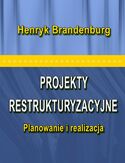The Meaning of Constructions. The Cognitive Denial of the Lexicon-Syntax Division - Onepress

ISBN: 978-8-3801-2272-7
stron: 244, Format: ebook
Data wydania: 2017-09-21
Księgarnia: Onepress
Cena książki: 16,80 zł (poprzednio: 20,74 zł)
Oszczędzasz: 19% (-3,94 zł)
KsiÄ…ĹĽka dotyczy tradycyjnego podziaĹ‚u na leksykon i skĹ‚adniÄ™ zastÄ…pionego w ostatnich dekadach modelem kontinuum (Lexicon-syntax continuum), w którym nie ma ostrej granicy miÄ™dzy komponentami. Opracowanie rewiduje przesĹ‚anki (takie jak rozmycie granic miÄ™dzy leksykonem i skĹ‚adniÄ…), którymi kierujÄ… siÄ™ obecnie jÄ™zykoznawcy odrzucajÄ…cy podziaĹ‚ na leksykon i skĹ‚adniÄ™. Celem opracowania jest wykazanie, ĹĽe chociaĹĽ podziaĹ‚ jest nieostry, jest nadal prawdziwy i ma konsekwencje dla elementów jÄ™zyka znajdujÄ…cych siÄ™ po obu jego stronach. JednÄ… z tych konsekwencji jest zróĹĽnicowanie potencjaĹ‚u semantycznego form skĹ‚adniowych w porównaniu do form leksykalnych. KsiÄ…ĹĽka adresowana jest do jÄ™zykoznawców pracujÄ…cych nad konstrukcjami gramatycznymi w ramach jÄ™zykoznawstwa kognitywnego, a w szczególnoĹ›ci modelu gramatyki konstrukcji.
Osoby które kupowały "The Meaning of Constructions. The Cognitive Denial of the Lexicon-Syntax Division", wybierały także:
- English 4 IT. Praktyczny kurs j 49,67 zł, (14,90 zł -70%)
- Ucz si 9,67 zł, (2,90 zł -70%)
- Zyskaj angielski akcent. Kurs video. Trening wymowy 99,00 zł, (39,60 zł -60%)
- English 4 IT. Praktyczny kurs j 59,00 zł, (26,55 zł -55%)
- ASAP. Jak nauczyć się języka obcego tak szybko, jak to możliwe 34,15 zł, (15,71 zł -54%)
Spis treści
The Meaning of Constructions. The Cognitive Denial of the Lexicon-Syntax Division eBook -- spis treści
Table of Contents
1. Introduction / 9
1.1. Traditional Distinction / 11
1.2. Rejection / 12
1.3. Meaning / 15
1.4. Against Rejecting Too Soon / 17
1.5. Construction Grammar / 19
1.6. Dimensions of Constructions / 21
1.7. Definitions of “Construction” / 23
1.8. Terminological Note / 26
1.9. Overview / 30
2. The Lexicon‑Grammar Distinction / 31
2.1. Modularity / 31
2.2. Conclusions / 40
2.3. Differences Between the Two Classes / 42
2.4. A New Model of the Lexicon and Syntax / 59
2.5. Pragmatic Strengthening / 65
2.6. Persistence / 67
2.7. Concluding Remarks / 68
3. Oversemanticized Constructions / 71
3.1. Implausible Meanings / 71
3.2. Spatial Prepositions / 72
3.3. Diminutive Morphology / 74
3.4. The Into‑Gerund Construction / 76
3.5. The Incredulity Response Construction / 79
3.6. The Moral Evaluation Construction / 84
3.7. Instrumental NP Construction / 87
3.8. The Time Away Construction / 89
3.9. Past Tense Markers in Slavic Languages / 91
3.10. The Give‑Gerund CP Construction / 99
3.11. Conclusion / 101
4. How Constructions Are Really Constructed: Manner of Obtainment / 103
4.1. Rich Meanings in Construction Grammar / 103
4.2. The Anatomy of the Construction / 105
4.3. Obtainment / 106
4.4. Manner / 107
4.5. Conflation / 109
4.6. Obtainment as Motion /110
4.7. History / 112
4.8. Possession and Location / 113
4.9. Reference Point Relations / 116
4.10. Schemas / 117
4.11. Combining Schemas / 123
4.12. Obtainment and Loss / 123
4.13. Conceptual Integration / 125
4.14. Blending Spaces in the MOC / 128
4.15. The Interaction of the Schemas Within the Construction / 130
4.16. Sources of MOC Blending / 131
4.17. Online Understanding / 132
4.18. Emergence of the Mappings / 135
4.19. The “Common Sense” Misconception / 138
4.20. Gapping / 139
4.21. Obtainment Through Retrieval in English / 145
4.22. Event Schemas in the Time Away Construction / 146
4.23. Concluding Remarks / 150
5. Way Too Much Meaning: The Semantics of the Way Construction / 151
5.1. Introduction / 151
5.2. Particulars of the X’s Way / 153
5.3. The semantics of the X’s Way / 156
5.4. Soft Constraints / 159
5.5. The Inference of Difficulty / 162
5.6. Complementary Distribution of Manner and Result / 163
5.7. Blending Disparate Events / 170
5.8. Motion Verbs Unattested in the Construction / 175
5.9. The Path Phrase / 178
5.10. Meanings of the Way Construction / 183
5.11. Conclusion / 184
6. Too Contentful to Be True / 187
6.1. Constructional Frames / 187
6.2. Transfers of Meaning / 197
6.3. Universal Grinder / 208
6.4. Ham Sandwich Coercions / 209
6.5. Concluding Remarks / 216
7. Final Remarks / 217
References / 221
Subject Index / 235
List of Figures and Tables / 239
Streszczenie / 241
Résumé / 243





